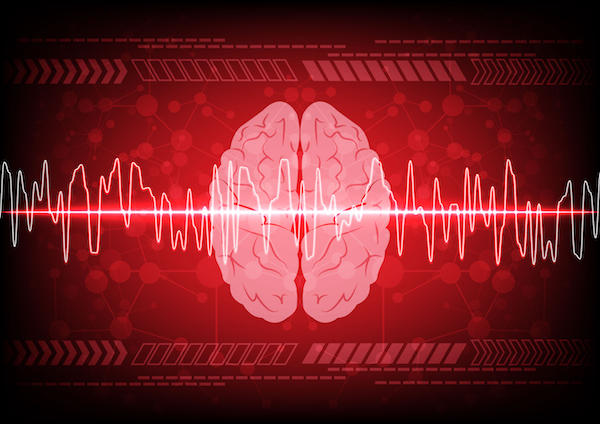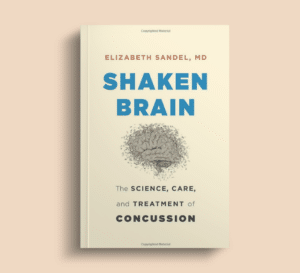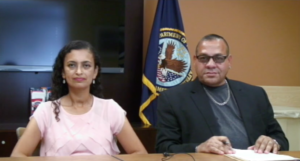What Is Cognitive Rehabilitation Therapy?

In 2011 the National Academies defined cognitive rehabilitation therapy (CRT) as “an umbrella term for a group of interventions that are used to support or ameliorate cognitive impairments, as well as the changes that occur in everyday functioning as a result of these impairments” (Cognitive Rehabilitation Therapy for Traumatic Brain Injury: Evaluating the Evidence).
This definition recognizes that people with traumatic brain injury (TBI) often have multiple cognitive impairments, a reduced awareness of their own impairments, and reductions in social competence. There is some research evidence to show that TBI patients can benefit from “activities and participation from treatment of a single deficit,” while others “may require a combination of treatments aimed at multiple problems to achieve comparable outcomes.”
Types of CRT
Restorative CRT treatment approaches enhance a wide range of cognitive activities such as attention, memory, or executive functioning using, for example, paper-and-pencil or computer-based exercises.
Compensatory CRT treatment approaches support cognitive activities using strategies to reduce the effect of impairments, such as mnemonics or external devices like memory notebooks or smart phones.
Who Provides CRT?
Speech-language pathologists are the therapists that most often provide CRT. However, occupational therapists, psychologists and neuropsychologists, cognitive therapists with special education training, recreation therapists, and vocational therapists may also deliver CRT.
Where Is CRT Provided?
For patients with a mild TBI or concussion who have cognitive deficits, the most common setting for treatment is a multi-disciplinary rehabilitation outpatient clinic. For patients with more severe TBIs, a speech-language pathologist or occupational therapist may provide CRT in an acute care or rehabilitation hospital and then later in an outpatient clinic.
CRT is less frequently provided in home and community settings.
Evidence for CRT Effectiveness
In the 1990s, systematic reviews of the scientific evidence for the effectiveness of CRT after traumatic brain injury (TBI) or stroke began to appear from the Cognitive Rehabilitation Task Force (CRTF) of the American Congress of Rehabilitation Medicine (ACRM) Brain Injury Special Interest Group. Since then, clinicians and researchers have been continuing to review the research evidence for which interventions can restore or compensate for cognitive deficits.
In the most recent review, published in 2019, the CRTF made 29 recommendations for evidence-based practice of CRT for TBI and stroke.
CRT Practice Standards
For treatment approaches where the research evidence for effectiveness was substantial, the CRTF uses the term Practice Standards. They explored research in these areas:
- Attention deficits after TBI or stroke.
- Visual scanning for neglect after right-hemisphere stroke.
- Compensatory strategies for mild memory deficits.
- Language deficits after left-hemisphere stroke.
- Social-communication deficits after TBI.
- Metacognitive strategy training for deficits in executive functioning.
- Comprehensive-holistic neuropsychological rehabilitation to reduce cognitive and functional disability after TBI or stroke.
Here are the CRT Practice Standards that apply to TBI for various cognitive activities:
Attention
Attention deficits can vary for people after a TBI. They may manifest as problems with focusing and sustaining attention. They may have problems with alternating attention – being able to mentally move from focusing on one thing and then another. The concept of divided attention is controversial, and may be more appropriately classified as a form of alternating attention. Concentration, the ability to do mental manipulation (mental arithmetic, for example), requires a cognitive ability called working memory.
Attentional abilities are necessary for memory functioning. If we are not paying attention, we will not remember what is being said or read to us.
The most substantial research evidence for effectively treating attention deficits in people with TBI concerns an approach called Attention Process Training, first developed in the 1980s by Sohlberg and Mateer. Computer-based versions of this approach since then have advanced its use for people with all severities of TBI.
Memory
Just as with attention, there are many different categories of memory. Semantic memory refers to the general facts and information that we store and retrieve from what we learn. Episodic memory relates to personally experienced events. Procedural memory encompasses our learned skills, habits, and tasks. Visual memory describes what we see, and verbal memory pertains to words, both written and spoken. Prospective memory ability means an ability to remember to do something at some future time. Emotional memory relates to learned emotional responses to situations or circumstances.
Explicit memories are based on information that we can readily express in words (and includes both episodic and semantic memories). Implicit memories are based on memory for information that we cannot readily express in words and that we may not be aware of, such as procedural and emotional memories.
The ACRM Task Force found substantial research evidence showing that CRT compensatory strategies are effective for mild memory deficits in TBI patients. Many examples of compensatory strategies can be found in a variety of online resources. People with and without cognitive impairments use these strategies to improve their day-to-day functioning.
Social Communication
Social communication deficits are sometimes called conversational discourse impairments or pragmatic language deficits. After a TBI, a person may have trouble staying on topic (topic maintenance), taking turns during conversation, appropriately referencing information, and being sensitive to conversational partners. Deficits in attention and memory may also affect their ability to communicate.
Metacognitive strategy training has been shown to be effective for improving social communication deficits in people after a TBI. Metacognition is the ability to reflect upon one’s own thought processes, and includes self-awareness and self-monitoring of thoughts. Metacognitive strategy training improves the knowledge and experience of a person’s cognitive processes. It may work best for TBI patients with less severe impairments.
Executive Functioning
Executive functioning includes the ability to organize one’s thoughts and actions, problem-solve, and prioritize and exercise inhibitory control. Mental flexibility is also an important cognitive ability encompassed by executive functioning. There is evidence that metacognitive strategy training can improve executive functioning.
CRT Can Be Combined with Other Treatments
For patients with multiple cognitive or neurobehavioral impairments, multi-modality CRT combines focused approaches to various cognitive impairments. A comprehensive-holistic neuropsychological rehabilitation program that focuses on improvements in functioning and quality of life in a community setting is helpful for reducing the disabling consequences of a TBI.
CRT might be coupled with pharmacotherapy, psychotherapy, behavior modification, vocational rehabilitation, and other therapies within a multidisciplinary rehabilitation program.
You Might Also Like
A Patient-Centered Approach to Concussion Care: CME & Webinar
Elizabeth Sandel, MD, a physiatrist and brain injury medicine physician, and Conor Gormally, co-founder of Concussion Alliance — a young man who has experienced several concussions — present a patient-centered care approach for emergency medicine and primary care physicians.
Concussions/Mild TBIs: Early Intervention to Achieve the Best Outcomes
In this Paradigm webinar, Dr. Elizabeth Sandel leads a discussion of concussion management that is based on a systematic, biopsychosocial model. She is joined by a Paradigm colleague, neuropsychologist Dr. Deborah Benson, to explore the evaluation and treatment of the complex issues for people with chronic symptoms.
Causes of Brain Injury in Military and Veterans
Interview with physiatrist Dr. Hetal Lakhani and 38-year Army veteran, Richard Reyes, who sustained three brain injuries during his military career.
Keep up to date
Get updates on the latest in concussion, brain health, and science-related tools from Dr. Elizabeth Sandel, M.D.
By clicking SIGN UP, you agree to receive emails from Dr. Sandel and agree to our terms of use and privacy policy.
Get the book!



